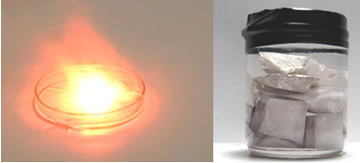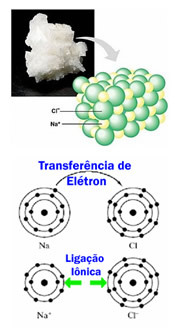In 2007 there was a partnership of Ministry of Health like Ministry of Education to carry out the School Health Program, recently integrated into the Brazil without Extreme Poverty Program, launched by the Presidency of the Republic in 2011. As part of this program, which began in March 5, 2012 in several national public schools, the campaign “Prevention of obesity in childhood and adolescence.”
In 50,000 schools, in 2,500 Brazilian municipalities, between March 5th and 9th, 2012, efforts to promoting student health and preventing chronic diseases such as diabetes and hypertension were intensified.
Special attention was paid to school canteens, which sought to provide healthy food, avoiding rich foods in sugar, sodium and fats.
The mentioned sodium actually does not refer to the chemical element sodium (Na), but to the sodium ion (Na+). This is because metallic sodium (Na) could never be consumed by anyone, as it is a highly reactive element, which catches fire spontaneously (therefore it is stored in containers containing kerosene or benzene), which reacts violently with water and burns the skin of who holds it.

However, when this element loses an electron from its outermost shell, it becomes the sodium ion (Na+), which has great biological importance, as a regulator of various substances between the blood and the cells of our body.
Do not stop now... There's more after the advertising ;)
Table salt (sodium chloride - NaCl) is an example of a substance that is formed by a bond ionic, that is, sodium definitely donates an electron to chlorine, forming the sodium and chloride.

However, a diet with excess sodium ions, mainly from salt, fish and meat, can cause several health problems, such as: urinary retention, thirst and edema. Excess salt is a risk factor for cardiovascular diseases such as high blood pressure and kidney disease.
The daily consumption of salt in Brazil is currently 12 grams, while that recommended by the World Health Organization (WHO) is only 5 grams.
In order for such food to become more common, the Ministry of Health signed in 2011 a term of commitment in partnership with food industries, so that there is a gradual reduction of sodium among ten types of food, including those most consumed by children and adolescents, such as salt bread, cookies and snacks.
By Jennifer Fogaça
Graduated in Chemistry
Would you like to reference this text in a school or academic work? Look:
FOGAÇA, Jennifer Rocha Vargas. "Sodium in food"; Brazil School. Available in: https://brasilescola.uol.com.br/saude-na-escola/sodio-na-alimentacao.htm. Accessed on June 27, 2021.

